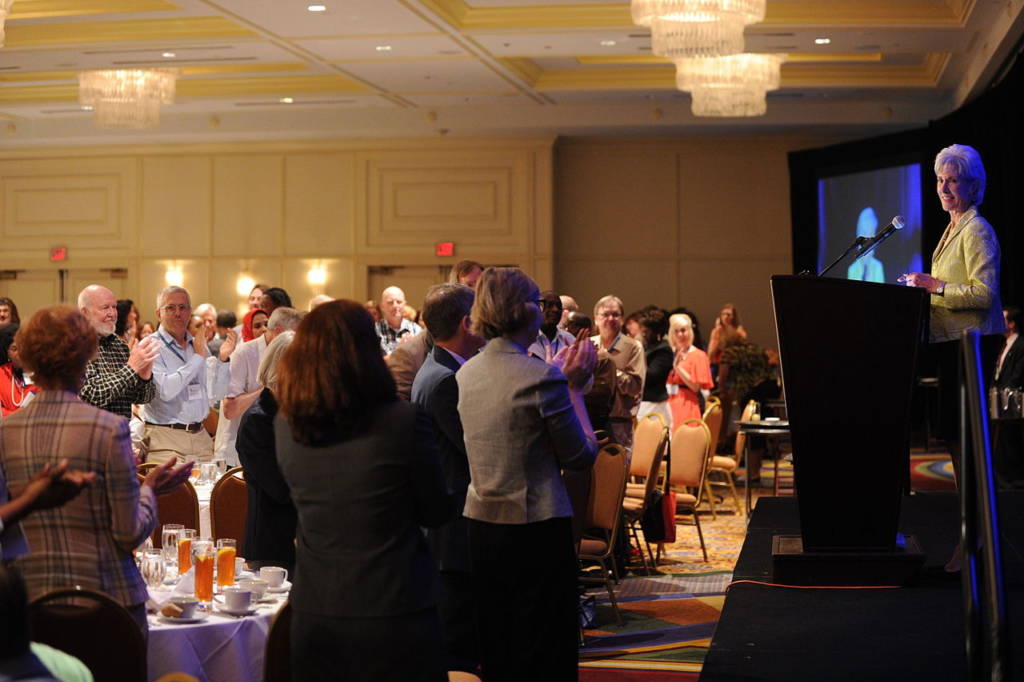At the news that Bergen County, N.J. is currently housing over 16 percent of its chronic homeless population each month, the audience erupted in applause.
“Homelessness is about life and death, so let’s act like it’s about life and death,” said Becky Kanis, the campaign director of 100,000 Homes Campaign, who commended the efforts of Bergen County and other communities. Her organization has set the goal of housing at least 2.5 percent of chronically homeless people each month.
Kanis and other advocates from across the country gathered in Washington from July 16 to July 18 for the 2012 National Conference On Ending Homelessness. The annual meeting brings together nonprofits and government officials, including leaders from the U.S Department of Housing and Urban Development (HUD) and Department of Veteran Affairs (VA), to exchange stories and data and to take stock of efforts to address the challenges of helping homeless people in cities, rural places and suburbs nationwide. Workshops ranged from the federal budget to ending homelessness, to health care reform and strategies to access Medicaid, to safe and effective housing strategies for victims of domestic violence.
A workshop on the 2012 election and ways the community can engage the candidates on the problem of homelessness was presented.
Despite the progress by the various communities, the problem of homelessness is evident in point-in-time count. On a single night on January, more than 630,000 people were homeless in the United States. About 100,000 of them were estimated to be chronically homeless, often cycling through shelters, hospitals, jails and prisons without managing to overcome the problems underlying their homelessness.
In an attempt to change these grim statistics, nonprofits and state and local governments rely upon funding from a host of federal agencies, including HUD, the VA and the U.S. Department of Health and Human Services (HHS). Under the administration of President Barack Obama, the federal government has worked to streamline rules and coordinate the goals of welfare, housing and veterans programs so they can better serve local and state efforts to end homelessness, said HHS Secretary Kathleen Sebelius.
“The same set of factors that make a family vulnerable to homelessness like substance abuse, domestic abuse and trauma can also bring those same families into the child welfare system,” Sebelius said. “And yet, ‘til now, the services that we have used to address child homelessness and those in the child welfare system are often totally separate.”
The first-ever federal funding for supportive housing specifically to reduce homeless families’ involvement in the child welfare system was established this year. A five-year process, it allows for child welfare dollars to be paired with housing services. While providing a stable home for the child and family, the funding would also lower a significant cost placed on the child welfare system.
The federal plan to end homelessness, known as Opening Doors, includes four strategic steps: 1) End chronic homelessness by 2015, 2) Prevent and end veteran homelessness by 2015, 3) Prevent and end homelessness among youth, children and families by 2020, and 4) Set a path to ending all kinds of homelessness.
Earlier on the day of Sebelius’ speech, VA Secretary Eric Shinseki announced the award of about $100 million in new grants for community agencies to help at-risk veterans and their families.
“We have the opportunity to end homelessness in our nation,” Sebelius said. “We know we can do this.”




